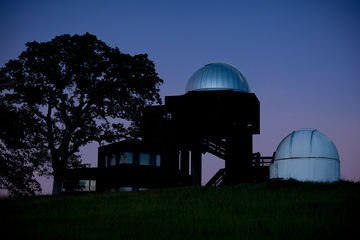PHYSICS DISSERTATION DEFENSE: Ryan Linehan

Linda Cicero
Ph.D. Candidate: Ryan Linehan
Research Advisor: Thomas Shutt
Date: July 5th, 2022
Time: 1:00 PM PT
Location: PAB 102/103
Zoom Link: https://stanford.zoom.us/my/ryanlinehan
Zoom Password: email nickswan [at] stanford.edu (nickswan[at]stanford[dot]edu) for password
Title: High Voltage Electrode Development and the LZ Experiment's First WIMP Search
Abstract: Approximately 15% of the matter density in the universe is composed of Standard Model particles, while the other 85% is composed of an enigmatic “dark” matter whose fundamental properties are unknown. In recent decades, there has been substantial interest in performing a direct detection of dark matter scatters on Standard Model particles, but currently no such signature has been verifiably observed. The LUX-ZEPLIN experiment was built to perform such a direct detection of dark matter using a dual-phase xenon time projection chamber (TPC), which can observe both light and charge signals from an interaction in the xenon. This technology is critically dependent on maintaining strong drift and extraction fields in order to observe the charge signal. These fields are established by a set of four stainless steel wire mesh high voltage electrode grids that span the full width of the TPC. During operation, these grids achieve wire surface fields well above 15 kV/cm. These high fields can produce spurious charge signals and signals from real radioactive decays with atypical light-to-charge ratios, both of which can lead to low-energy backgrounds in LZ science data. As a result, substantial effort in the design, construction, validation, and operation of these grids was required to ensure that the LZ detector could be used to pursue world-leading dark matter searches. In this talk, we will present a timeline of these efforts leading up to and including a discussion of the results of LZ’s first search for WIMP dark matter between 10 GeV/c^2 and 10 TeV/c^2. We also discuss a novel model for radiogenic grid backgrounds that lays the foundation for a rigorous low-threshold WIMP search that may probe dark matter masses down to 1 GeV/c^2.
PHYSICS DISSERTATION DEFENSE: Ryan Linehan